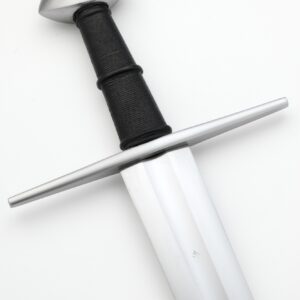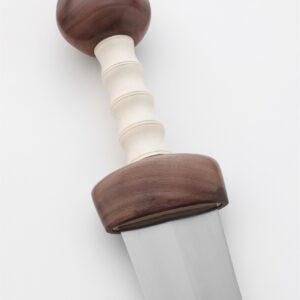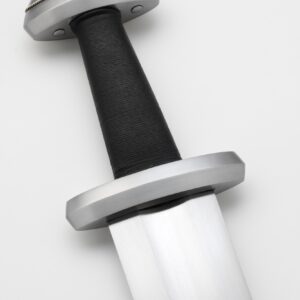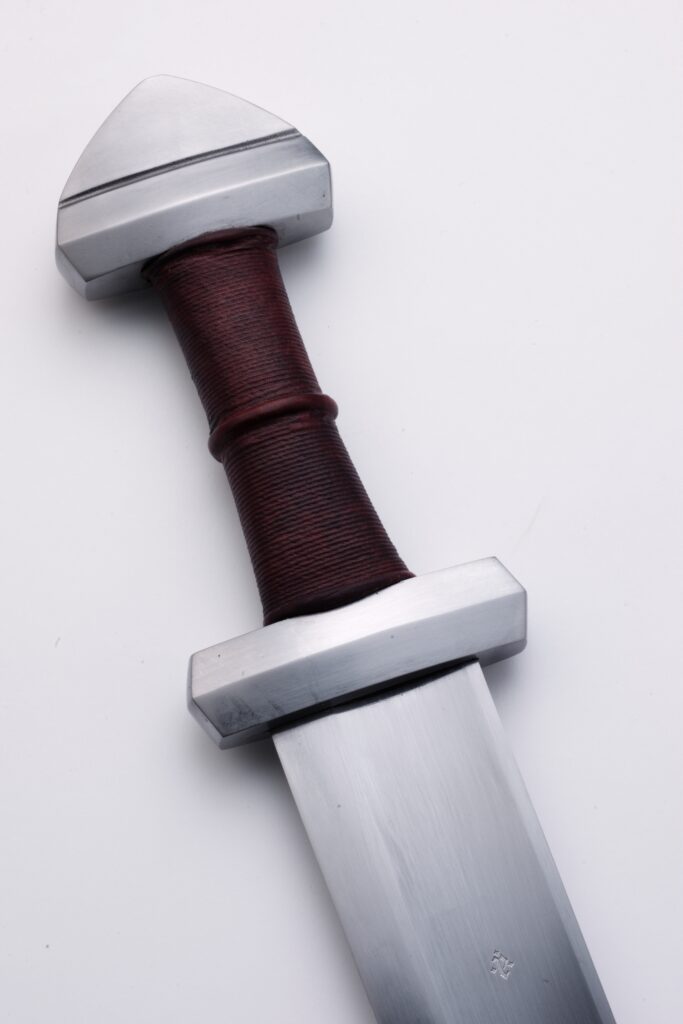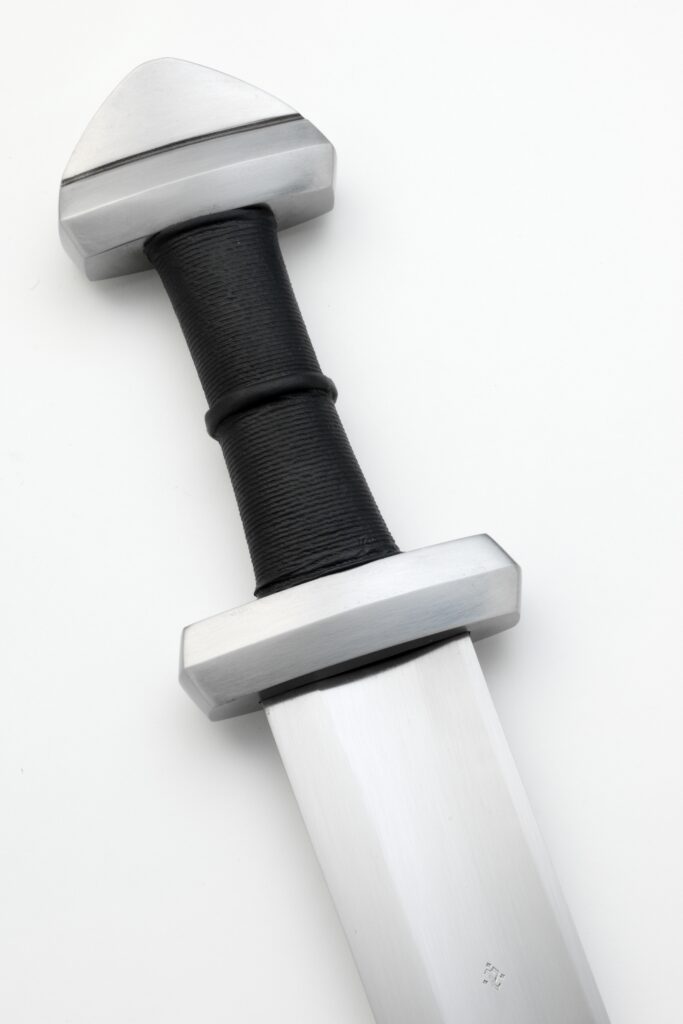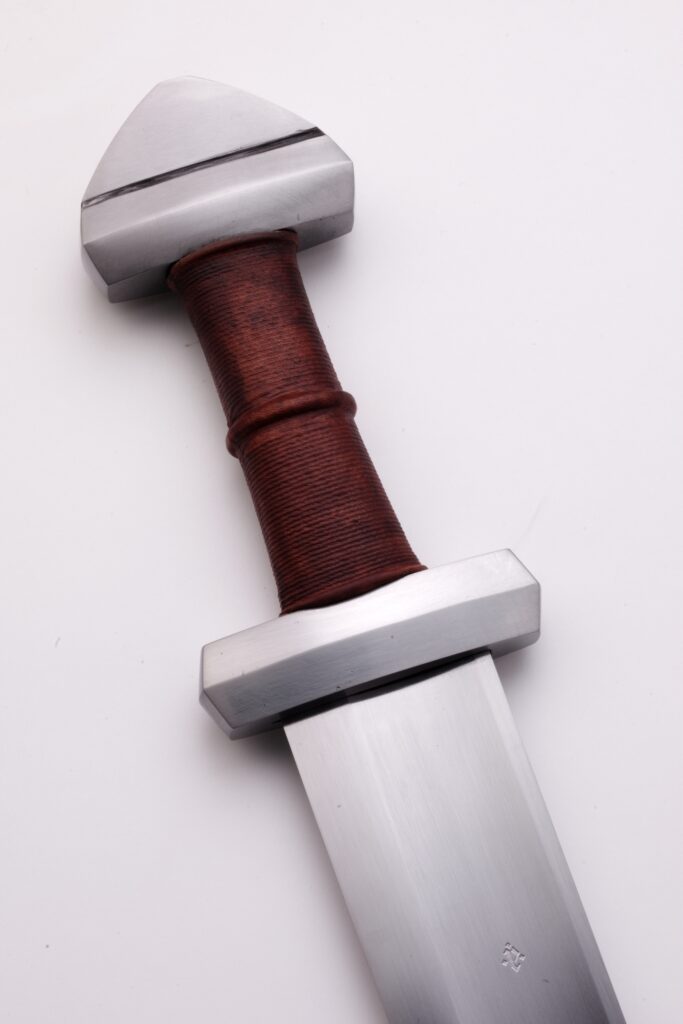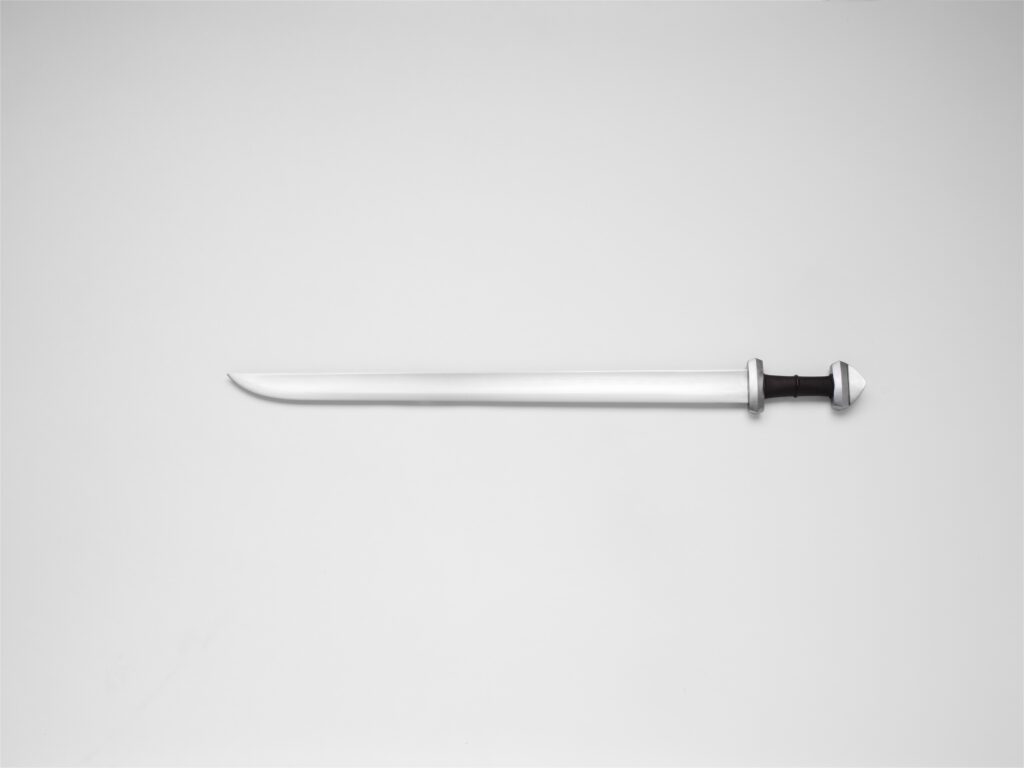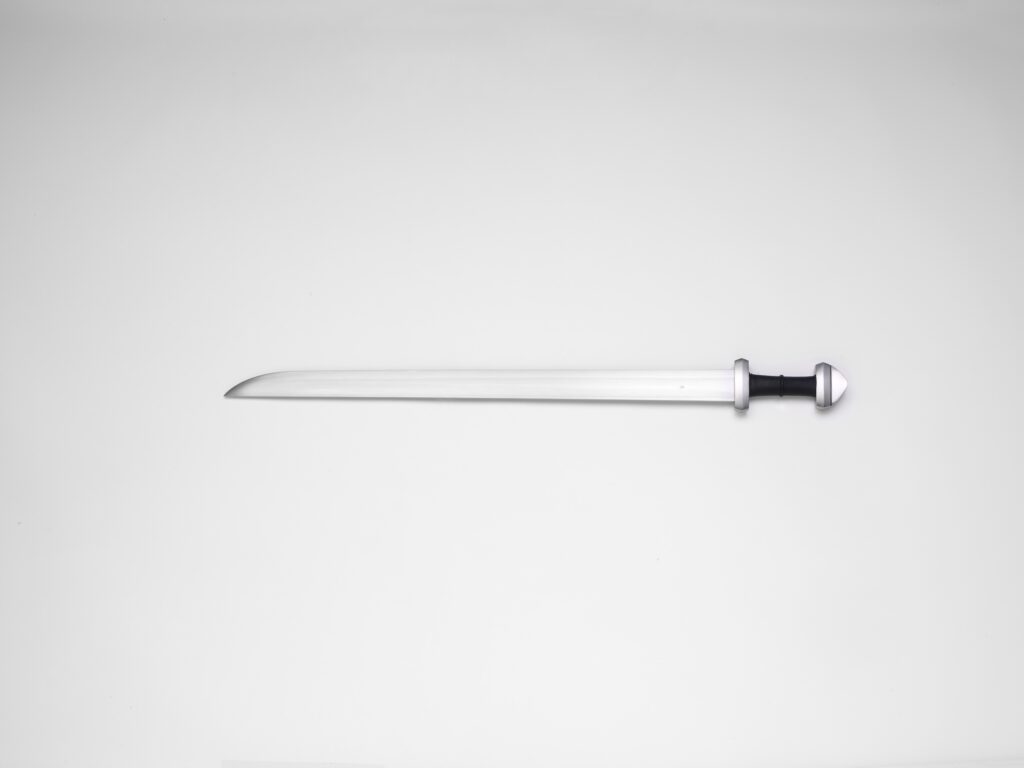(Viking Type H)
This sword was inspired by a splendid weapon discovered 1909 in the remains of a burial mound at North Arhus Farm, Hjartdal Parish, Telemark, Norway. This is one of the most beautiful examples of this type. The dimensions of the blade on the Berserker will be very close to this particular original. The Berserker is also influenced by other single edged swords Peter has seen and handled. Although being a hybrid of the features of several swords, it is still a clear example of the type based on study of originals.
The single edged Viking swords were most common in Norway and were developed from the longsax of earlier centuries. The character of the Berserkr blade is more hefty than a double edged sword of the same size, while still being far from cumbersome — a trusty, no nonsense shield splitter.
The single edged blade is classified by A Geibig as type 14. The Geibig types 1 and 14 are contemporary and belong to the early Viking age, Single edged Viking swords were still in use by the end of the 9th C and early 10th C. There is a shallow fuller along the whole width and length of the blade. This eliminates dead weight effectively, while allowing the sturdy spine to induce a superior stiffness to the blade.
This massive sword, with its shallow and broad fuller, is a dedicated cutting blade that still allows for quick handling characteristics.
Because of its aggressive and brutal character, we decided to name it for the fierce warriors of Oðin. Here is some information from Neil Price’s book, The Viking Way, regarding the Berserkr:
“…his [Odinn’s] men went [into battle] without mailcoats and were as wild as dogs or wolves, they bit their shields, were strong as bears or bulls; they killed people, but they themselves were hurt by neither fire nor iron; this is called going berserk. — Ynglingasaga 6 (translation, Neil Price)
“The term berskr was once thought to refer to the wearing of a bearskin, a ‘bear-shirt’ derived from ber-, ‘bear’. This would fit well with the idea of the ulfhednar as ‘wolfskin-wearers’, which is an uncontroversial derivation (cf. Muller 1967), but it would certainly not explain the practical encumbrance of actually wearing a bearskin. Curiously, very few of those advocating the ‘bear-shirt’ variant seem to have considered this. However, the term is usually interpreted now as meaning ‘bare-shirted’, following Noreen (1932) and Kuhn (1968) which would refer either to a man entering battle wholly or partly naked, or else without armour in the sense of a ‘shirt’ of mail. Whichever interpretation is followed, there are clearly a number of bear-like associations consciously intended in the name…”
The hilt components are investment cast in mild steel from original waxes carved by Peter Johnsson, based on Peter’s first-hand examination and documentation of period originals of this type. The hilt of the Berserkr is of Petersen type B, very similar to the Type H, but slightly less rounded and more “blocky.” The pommel is one piece.
Specifications
Total length: 36″ (91.4 cm)
Blade length: 29.56″ (75 cm)
Blade width: 2″ (5 cm)
CoB: 4.5″ (11.4 cm)
CoP: 18.6″ (47.3 cm)
Weight: 2 lbs 10.6 oz (1.2 kilos)
This sword is offered in a limited edition of 1000 swords worldwide
